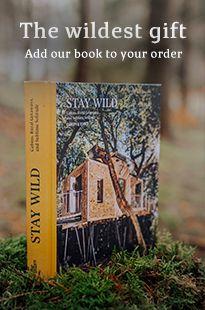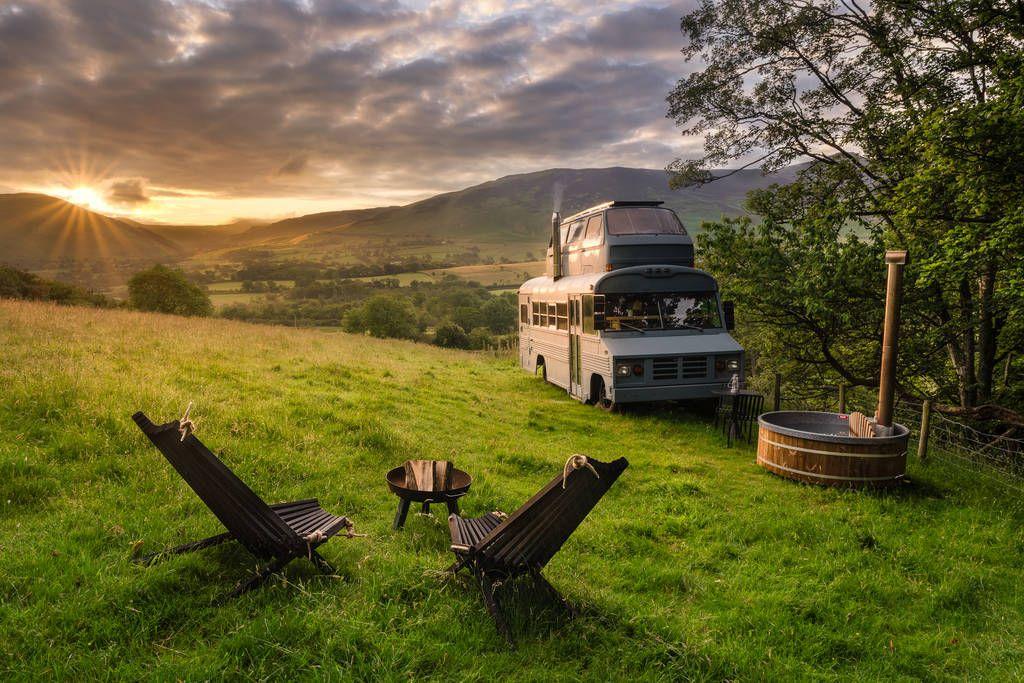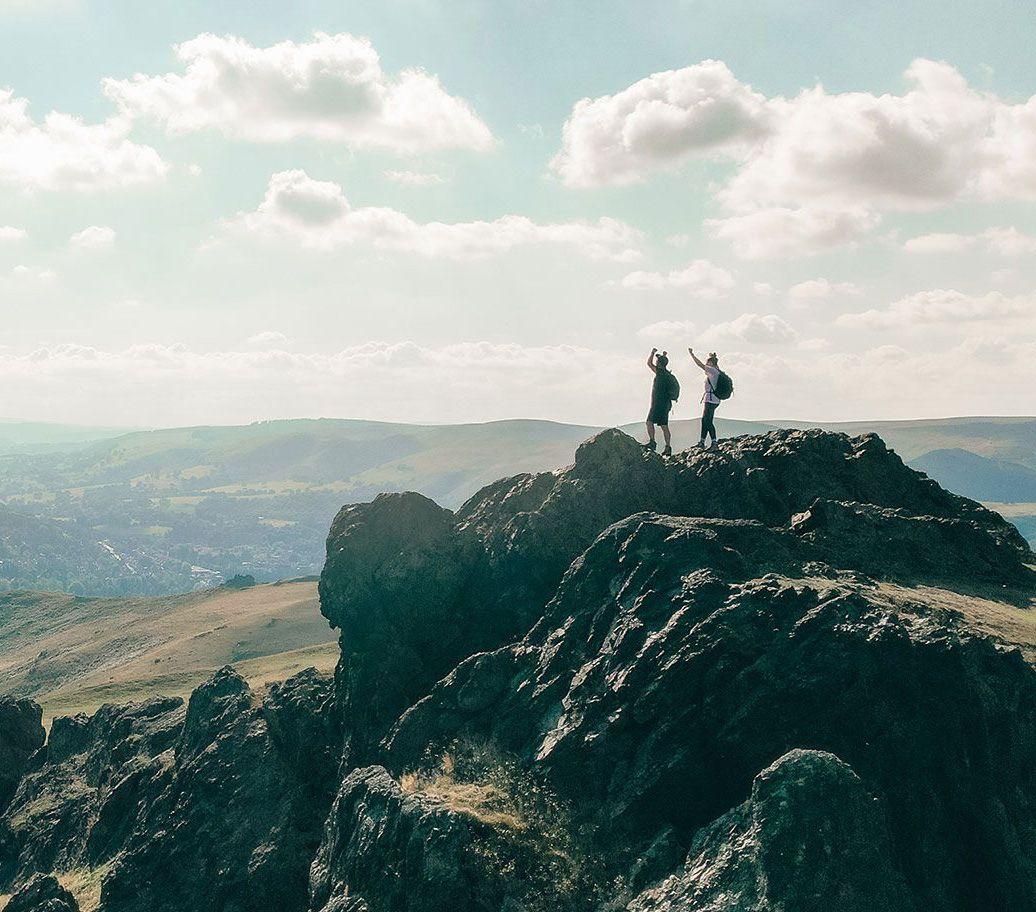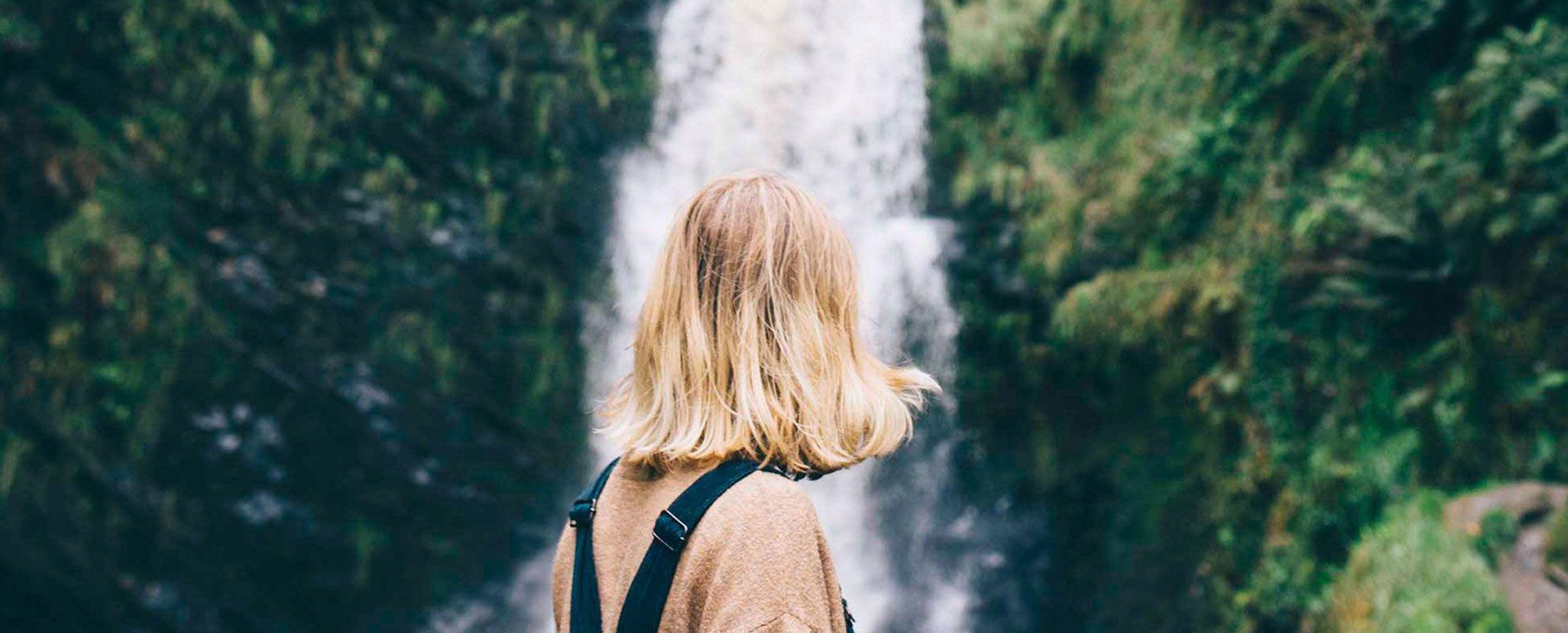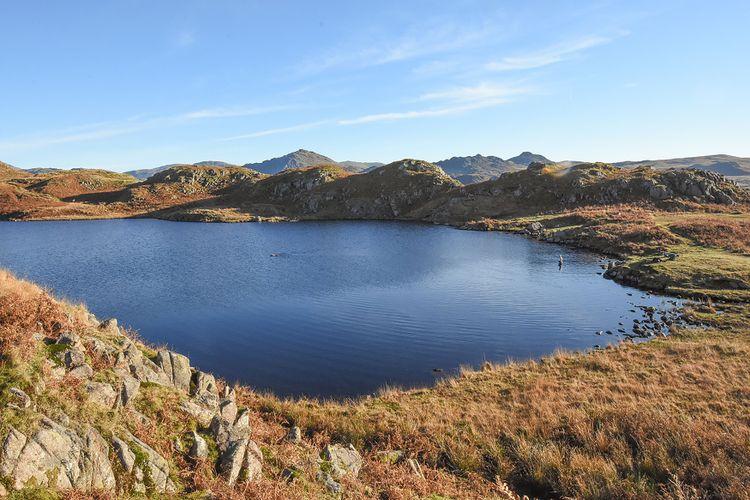
The five best walks in the Lake District and where to swim afterwards
Pet Kelly of Wild Things, publishers of Wild Swimming Walks Lake District, and the Wild Guide, shares some of their favourite waterside walks in England's legendary national park and the wild swimming spots they love cooling off in on the way. Join them to scramble up slopes and peer down from cloudy peaks on (arguably) the five best walks in the Lake District, all of which you can find in their book.
Wray Castle, Windermere, and the Latterbarrow Ramble
Windermere is the most iconic lake in England and has long been associated with distance swimming from many points of its 10.5-mile shoreline. The most accessible part of the lake lies to the west where, by happy coincidence, the giant folly of Wray Castle is situated. Wray Castle was built in the Gothic Revival Style by a retired Liverpool surgeon, using his wife’s inheritance from a gin fortune. She showed her contempt for it by refusing to live there.
Mrs Dawson really must have been quite spoilt, because it has very good lake access and wonderful views of the fells surrounding Ambleside. It’s owned by the National Trust (NT) now and they allow public access to the estate grounds which run along a substantial section of Windermere’s shore. There is a good NT car park at the castle and a great café too.
The walk up to Latterbarrow from the castle takes a route through typical south Lakeland countryside, passing the enchanting Blelham Tarn along the way (a haven for wildlife of all kinds). As far as lowland Lake District summits go, Latterbarrow must be one of the finest, sporting a huge summit cairn in the form of a great stone obelisk. The panoramic views from the top are fantastic and the return route, heading north-east from the summit, offers a romp through the bracken down to the mixed woodland of Claife below, which is easy on the legs.
Windermere’s shoreline is soon reached and offers many opportunities for dipping and swimming on the return route. Our favourite spot to swim from is at High Wray Bay where there is a nice pebble beach next to a stone boathouse. The swim around to Watbarrow Point is usually sheltered but maintains that exposed ‘big lake’ feel that make swimming in Windermere so exhilarating.
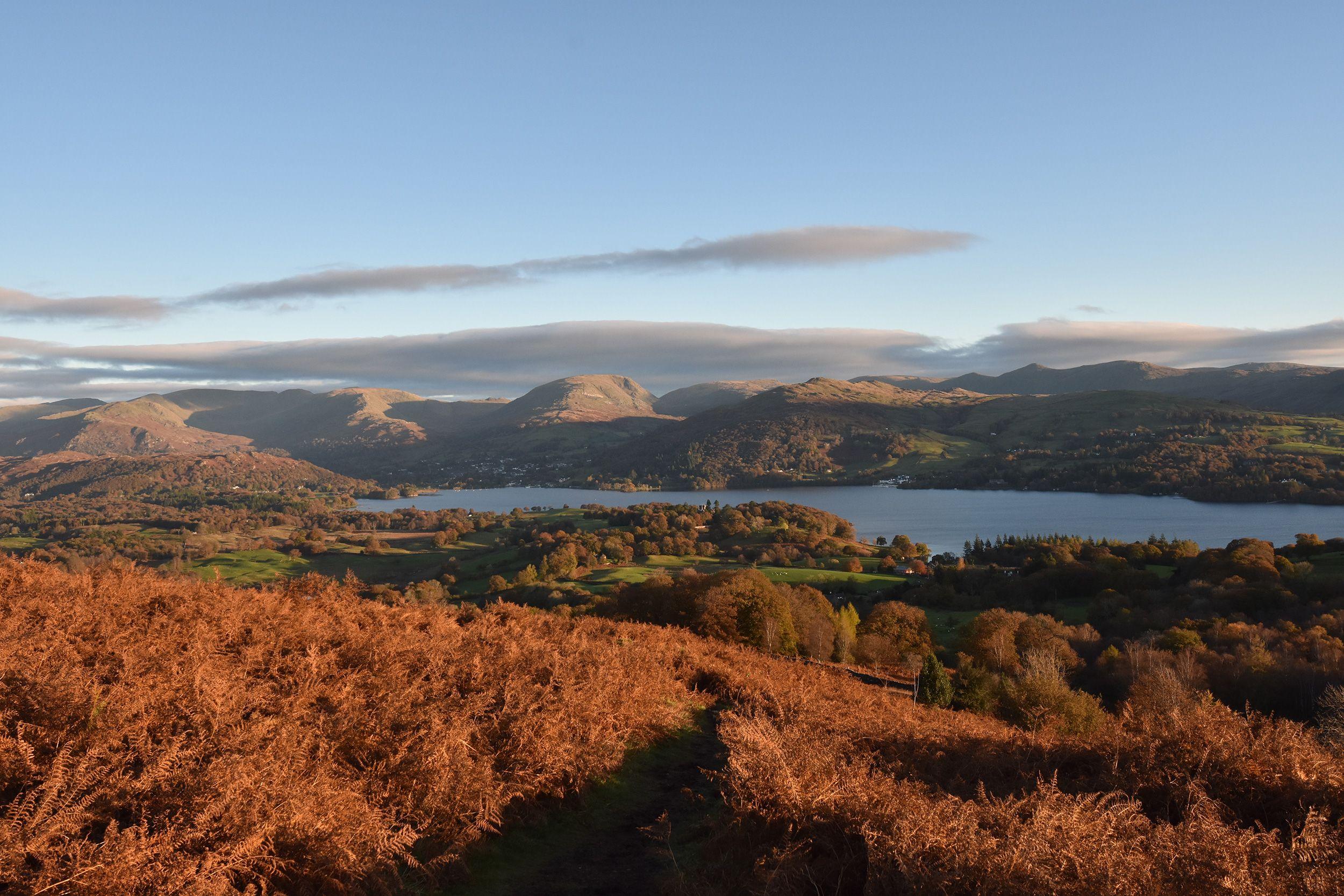
Coniston Launch Adventure
The onset of spring always brings with it the anticipation of enjoying the buzz of the Lakes as the season gets underway. One of the joys of living here is making full use of the activities on offer for our visitors, the most popular of which are the boats trips on our big lakes. Most of the ferry routes are well thought out to facilitate great walks in the Lake District, allowing for interesting route variations as the mood dictates.
This route makes the most of the excellent summer service provided by the Coniston Launch Company on Coniston Water. Starting at their jetty in Coniston, take the launch down the lake to Sunny Bank, next to Torver Back Common. By following the Cumbria Way south west, then detouring south east to reach Oxen House Bay and the lake shore, a swimming expedition to Peel Island can be launched.
To Arthur Ransome’s Swallows and Amazons fans, this perfect speck of rock is better known as Wild Cat Island and is a lovely place to swim to for a number of reasons. Islands hold a magnetic fascination to all self-respecting outdoor swimmers and Peel Island is no exception.
Whatever Peel Island means to you, the swim across Coniston to get there is only part of the adventure. The island is a fascinating place to visit in itself, featuring a ‘secret harbour’, the site of an ancient copper smelting works and some exciting jumps from the rocks from its southernmost peninsula (check the landing before you jump).
The return walk along the west shore on Coniston offers more opportunities for swimming, and the Bluebird Café back at the jetty is a great place to have a pot of tea and a bite to eat and finish the day.
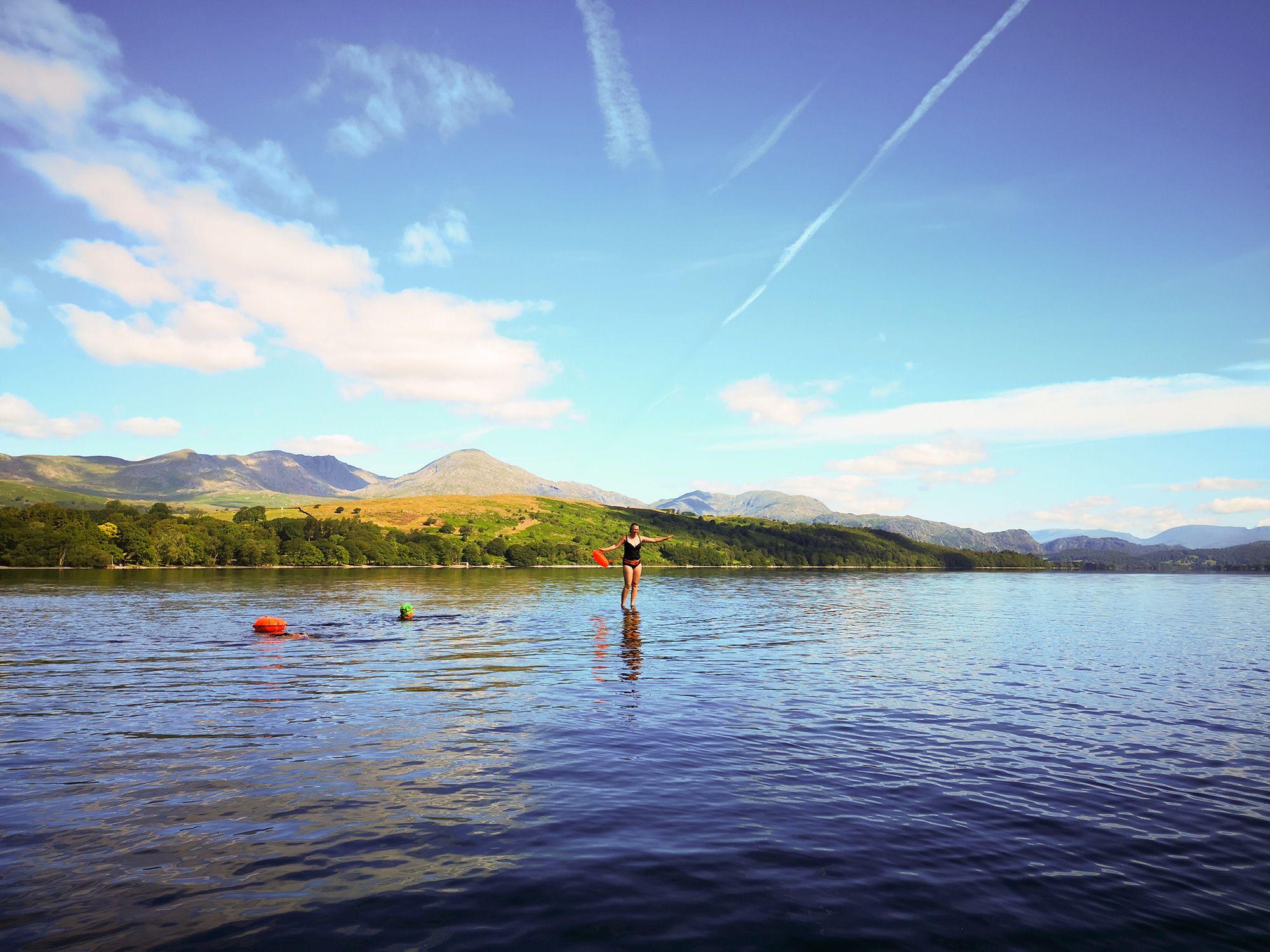
Keswick, Catbells and the Derwentwater Shoreline
Keswick is the hub of outdoor adventure in the north Lakes, and for good reason. It is well connected with rail and motorway networks and is in a perfect position to access the nearby fells, rivers, and lakes nearby. Keswick is a lively market town with good and varied accommodation, loads of outdoor shops and some of the best cafes and pubs in the region. From an outdoor swimming perspective, it is an ideal base, as Derwentwater is but a short walk away from the town centre.
Most of the Derwentwater shoreline enjoys good access for swimming and the Keswick Launch Company operates a regular shuttle service between Keswick and Hawse End during the summer season. Hawse End is a perfect place to begin this walk. The drive from Keswick is short and there is parking nearby if you arrive early. The walk from Hawse End up onto the ridgeline that leads to Catbells (and the impressive fells beyond) is a classic and easily one of the best walks in the Lake District. For many folk, the hike up Catbells provided the very first taste of fell walking, and what a perfect way to start! The climb provides just the right amount of challenge without ever being too daunting, and the panoramic views en route just don’t get any better.
The inviting view of Derwentwater is ever present during the walk and to swimmers the views of its handsome bays and islands below are fascinating. Upon descending the fellside, the serious task of exploring from the water can get under way. Beginning with the lovely walk through the woods of Manesty Park towards Great Bay, take the time to explore the many bays here including Myrtle, Abbot’s, and Brandelhow Bay.
If you are a confident and experienced swimmer, leave a bit of time to visit St. Herbert’s Island further along the lake, just opposite the launch jetty. The swim to the island is a round trip of about 2km with some exciting and exposed swimming to get to it. From Hawse End the return journey is straightforward and allows plenty of time to explore the shops, cafes and bars of Keswick.
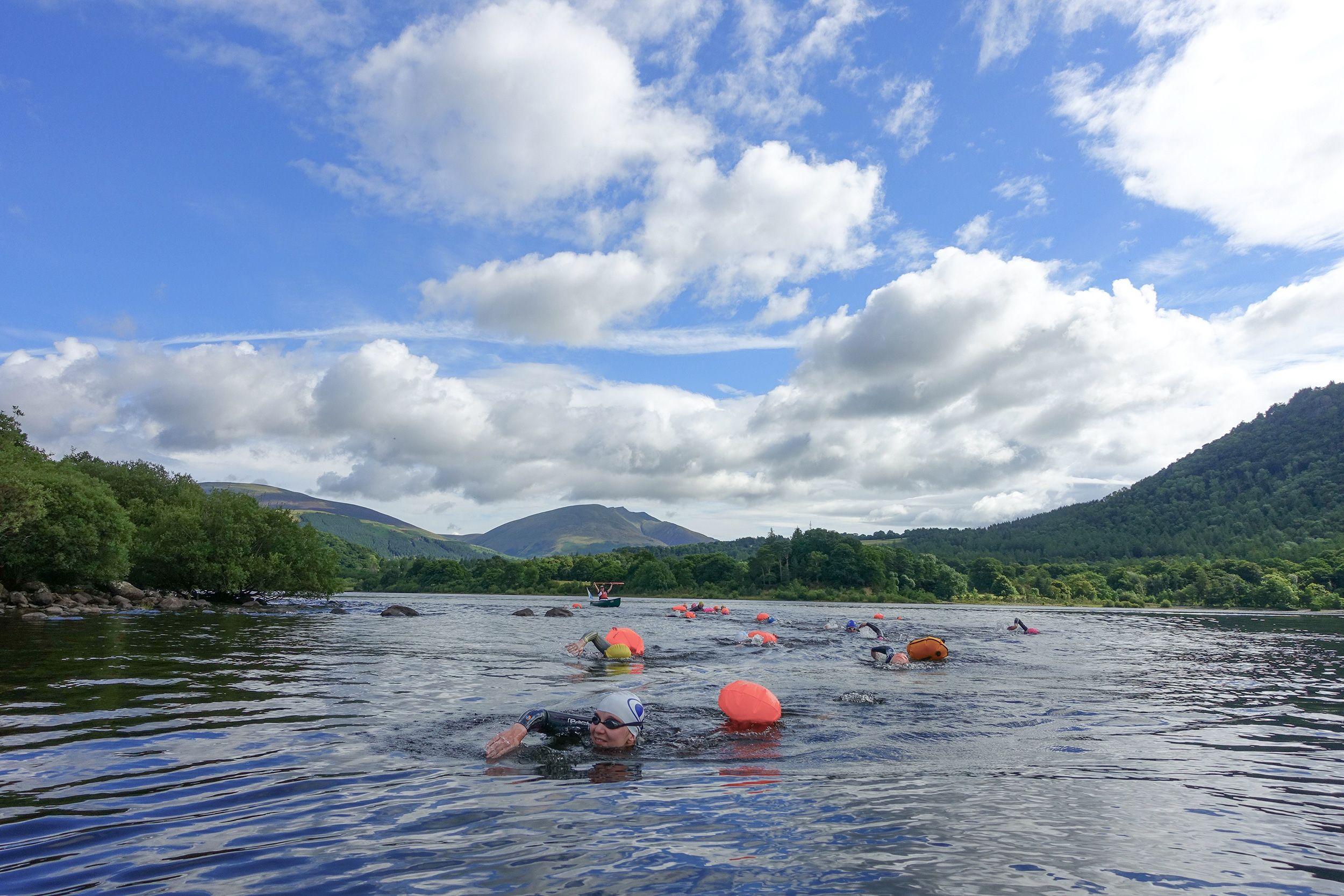
Blea Tarn at Beckfoot
Although it is a bit of a trek to get to, Eskdale is very much worth the effort if you enjoy messing about in the water. The lovely walk to Blea Tarn from Beckfoot, near Dalegarth Station, is a delight in itself, but the surrounding becks positively bristle with waterfalls and deep, aquamarine dubs which are perfect for dipping and swimming.
On a warm summer’s day when the desire to just loll about next to the water is at its strongest, even a very keen swimmer would be hard pushed to visit all of the swimming holes in this small part of Eskdale. There are other worthy attractions nearby too (Ravenglass and Eskdale Railway and the La’al Ratty steam train, Hardknott Castle Roman Fort and Eskdale Mill to name a few); so, if you are planning a trip here, better make it a long weekend.
There is plenty of parking at Dalegarth station and the walk up the side of the fell to Blea Tarn is uncomplicated. If you can tear yourself away from the peace of the tarn then head for the waterfall pools that feature on the return route via Whillan Beck. Firstly, Whillan Beck Force, then once back down in the valley, Gill Force and the pool at Dalegarth Bridge on the River Esk itself. Stanley Force, which emanates from a tributary of the Esk is spectacular and well worth a visit.
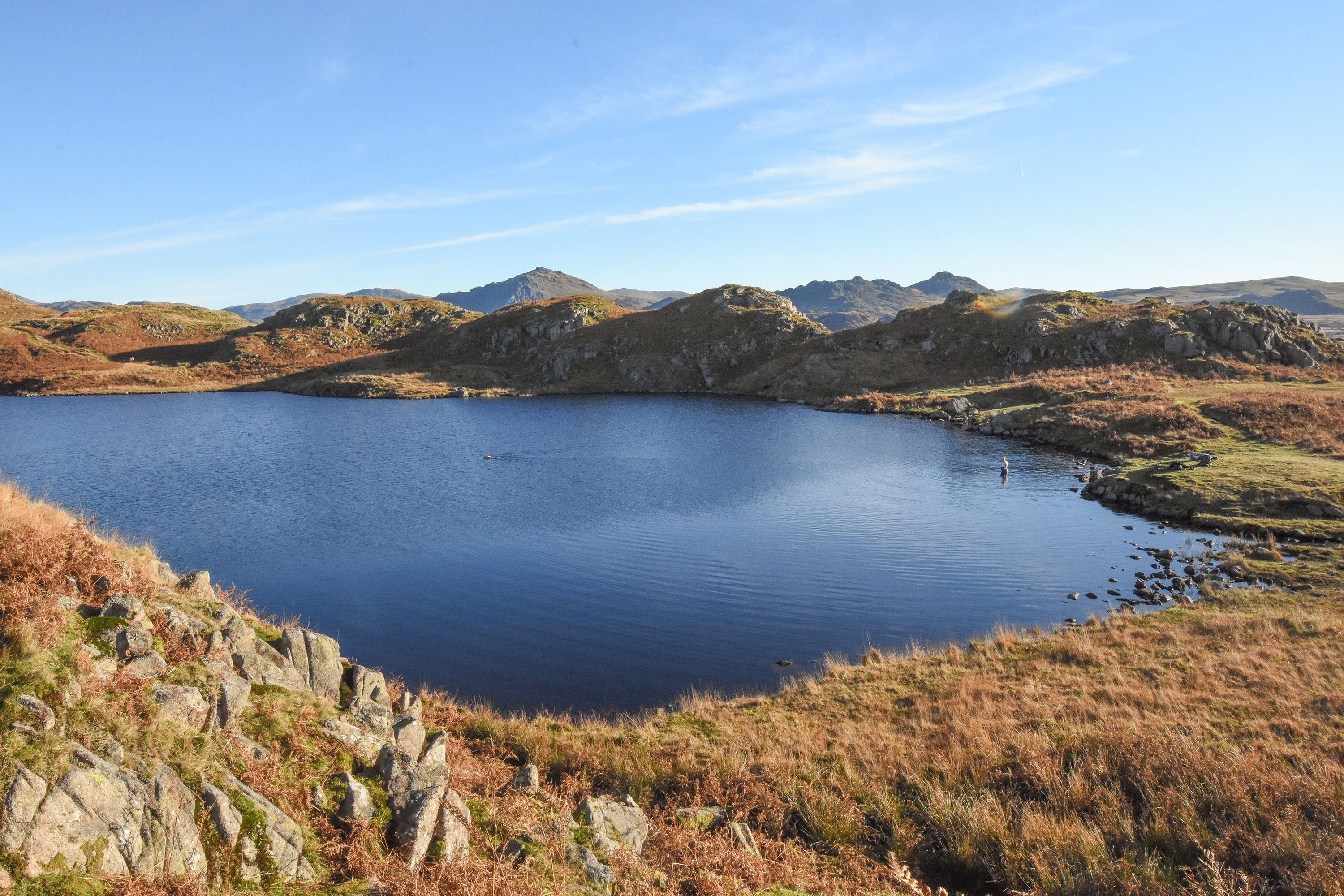
Bleaberry Tarn, High Stile and Buttermere
The Buttermere fells are considered by many, including Wainwright, to be the most beautiful in the Lake District. The tarns and lakes here mirror that beauty and offer unsurpassed swimming opportunities. This walk makes the best of both worlds by taking in the classic ridge walk to High Stile, visiting the wonderful Bleaberry Tarn along the way and returning via the eminently swimmable shores of Buttermere.
If you are a lover of the mountains and the terrain that surrounds them, then you are destined to be smitten when visiting the Buttermere Valley for the first time. The beautiful ribbon lakes carved out by the glaciers of the last ice age fill the valley, while the impressive fell tops of Red Pike, High Stile, Haystacks, Fleetwith Pike, Dale Head, Hindsgarth and Robinson encircle the head of the valley, forming a crenellated amphitheatre that takes the breath away.
The climb up to Bleaberry Tarn is one of the tougher walks in the Lake District. It's brutal, but height is gained quickly, and you can be sure to have the tarn to yourself if you plan to swim in its particularly clear and cool waters. The walk to High Stile via Red Pike provides the ideal post-swim warm up and gives a tantalising view of Buttermere down below.
Following the descent down Scarth Gap Pass, the walk back to the village alongside the lake is a joy. Whichever way you choose to return around the lake, clockwise or anticlockwise, you will not be short of perfect places to swim. It’s surrounded by shallow pebble-lined bays and the cool water that flows into the lake from Warnscale and Gatesgarth Becks is as clear as crystal. Just when it feels like life couldn’t get any better, Syke Farm back in Buttermere village sells the best ice cream in the Lakes and a visit there provides the perfect end to a big day out.
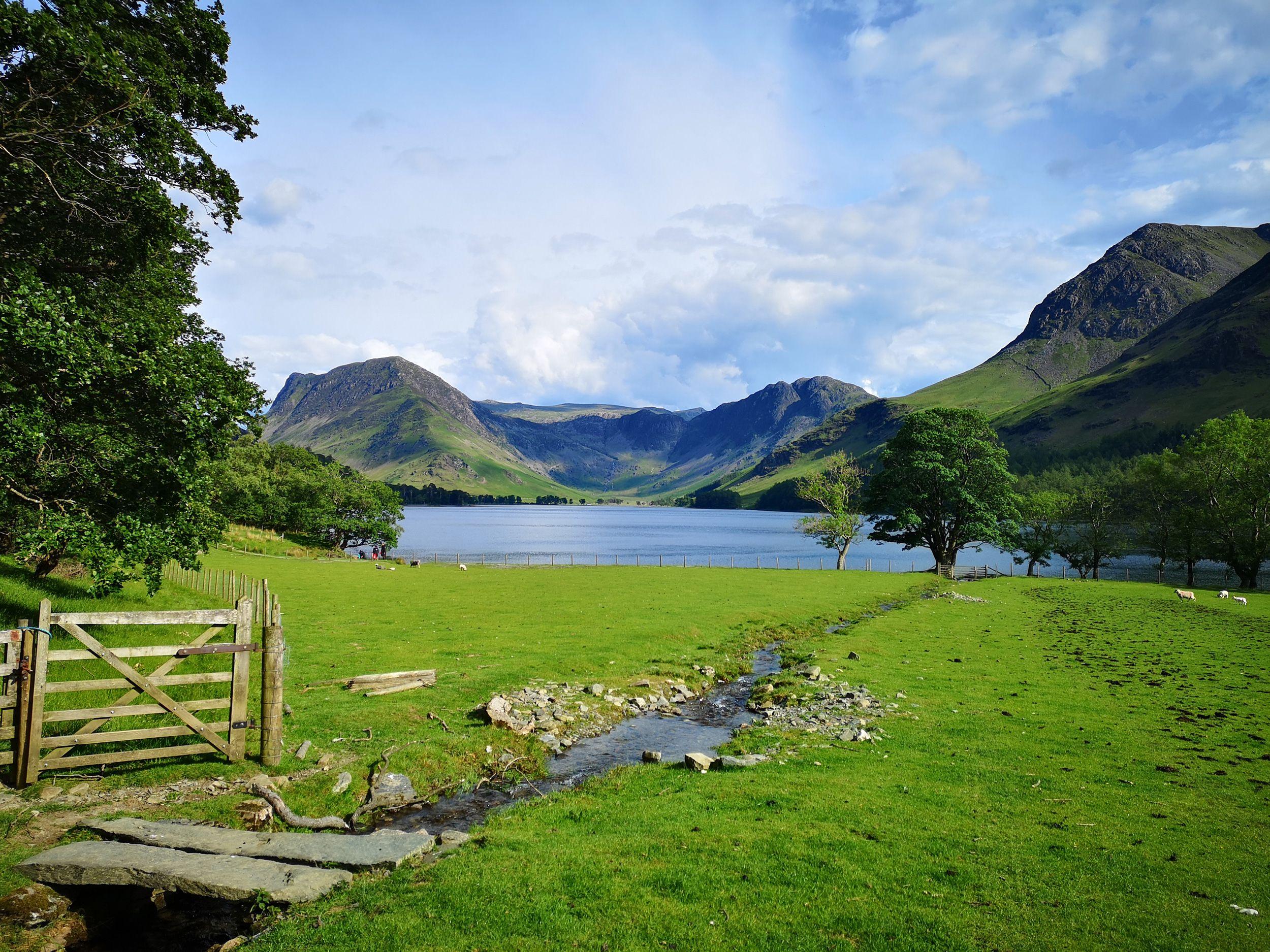
About the author
Pet Kelly runs Swim the Lakes and is author of Wild Swimming Walks Lake District, publishing May 2022.
http://www.wildthingspublishing.com/product/wild-swimming-walks-lake-district/
The Wild Swimmers Code
We enjoy very accessible wild swimming in the Lakes and are free to swim where we want with a few exceptions. Please follow the Wild Swimmers Code:
With freedom comes responsibility: Take appropriate safety equipment and clothing and swim responsibly, there are no lifeguards in the Lakes.
Be careful where you park, camp, light a fire and how you behave. Respect everything and everyone, rural environments and economies are more delicate than you think. Support, and help protect them.
Stop the Spread of non-native invasive species: Check, Clean & Dry equipment, clothing & dogs before moving on to swim elsewhere!
Consider your location: Is it appropriate to be swimming there? Be aware of delicate natural habitats, overuse, and the location of Sites of Special Scientific Interest (which are protected by law).
Visit the Lakes and beyond to swim, but please love it, and look after it.



